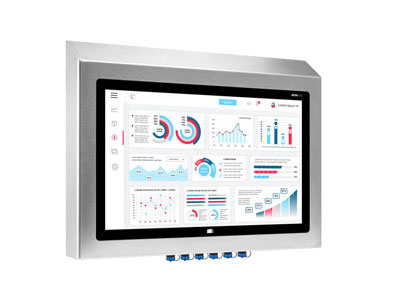Key Takeaway
No, an industrial PC (IPC) is not a PLC (Programmable Logic Controller). An IPC is a high-performance computer used in industrial environments. It can handle complex tasks, run various software, and connect to multiple systems. On the other hand, a PLC is a specialized device designed for control tasks. It automates machinery and processes in industrial applications.
While both IPCs and PLCs are used in industrial automation, they serve different purposes. IPCs offer more flexibility and computing power, while PLCs are robust and reliable for controlling specific operations.
Definitions and Differences
Industrial PCs (IPCs) and Programmable Logic Controllers (PLCs) are both crucial in industrial automation, but they serve different purposes. An IPC is a robust computer designed for industrial environments, capable of running complex software and handling large datasets. In contrast, a PLC is a specialized microcontroller optimized for real-time control of machinery and processes.
PLCs are typically used for tasks requiring high reliability and robustness, such as managing factory automation. They are designed with a rugged architecture to withstand harsh industrial conditions. On the other hand, IPCs offer greater flexibility and processing power, making them suitable for tasks that require extensive data analysis and complex computations.

Key Features of Each
PLCs boast features like real-time processing, easy programmability, and high reliability. They come equipped with dedicated inputs and outputs for seamless integration with industrial machinery. Their programming is often done using ladder logic, which is intuitive for engineers familiar with relay control systems. PLCs are designed to handle tough industrial environments, ensuring consistent performance even under harsh conditions. This makes them ideal for tasks requiring high reliability and precision. Additionally, PLCs are modular, allowing for easy expansion and customization to fit specific application needs.
IPCs, meanwhile, offer powerful processors, large memory capacities, and the ability to run a wide range of operating systems and software applications. They support various interfaces and communication protocols, allowing for advanced data handling and connectivity. This makes IPCs ideal for applications that demand high computational power and versatility, such as data acquisition, visualization, and complex control algorithms. IPCs are also scalable, enabling the integration of various peripheral devices and software solutions to enhance their functionality.
Applications and Use Cases
PLCs are predominantly used in manufacturing applications where consistent and precise control is paramount. They excel in scenarios like assembly lines, robotic automation, and machinery control. Their robustness ensures uninterrupted operation in environments subject to electrical noise, extreme temperatures, and vibrations. For example, in an automotive assembly line, a PLC might control the timing and sequence of robotic arms, ensuring that each part is assembled accurately and efficiently.
IPCs find their niche in applications that require high-level computing capabilities. These include process control, SCADA systems, and industrial IoT applications. IPCs are also utilized in environments where advanced data processing, real-time analytics, and connectivity with enterprise systems are essential. Their flexibility allows for integration with various software platforms, making them adaptable to a wide range of industrial applications. For instance, an IPC might be used to monitor and analyze data from multiple sensors in a chemical plant, providing insights for optimizing production processes.
Performance Comparison
When comparing performance, PLCs shine in real-time control and reliability. They are designed to execute control tasks deterministically, ensuring immediate response to input changes. This makes them ideal for critical applications where timing is crucial. For example, in a packaging plant, a PLC can instantly adjust the speed of conveyor belts based on the detection of product jams, preventing disruptions.
IPCs, while not as deterministic as PLCs, offer superior computational power and versatility. They can handle complex algorithms and large datasets, providing advanced analytics and processing capabilities. IPCs are also better suited for applications requiring a graphical user interface, as they can run sophisticated software and operating systems. For example, an IPC might be used in a control room to provide operators with a detailed visual representation of an entire production process, allowing for more informed decision-making.
Integration Possibilities
PLCs and IPCs can be integrated to leverage the strengths of both systems. For instance, a PLC can handle the real-time control of machinery, while an IPC manages data processing, visualization, and higher-level decision-making. This hybrid approach allows for robust, reliable control combined with advanced data handling and connectivity. Integration can be achieved through various communication protocols like Ethernet/IP, Modbus, and OPC UA, facilitating seamless data exchange between PLCs and IPCs.
This integration enhances system flexibility and scalability, allowing for more sophisticated automation solutions. For example, in a smart factory, a PLC might control the operations of individual machines, while an IPC collects and analyzes data from the entire production line, identifying inefficiencies and suggesting optimizations. This combination ensures that the factory operates smoothly and efficiently, with minimal downtime and maximum productivity.
Conclusion
In summary, while Industrial PCs and PLCs are both integral to industrial automation, they serve distinct roles. PLCs are unmatched in their reliability and real-time control capabilities, making them indispensable for critical manufacturing applications. IPCs, with their superior processing power and flexibility, excel in tasks requiring advanced data handling and connectivity.
By understanding the unique features and applications of IPCs and PLCs, engineers can make informed decisions on which system to deploy based on their specific needs. Integrating both technologies can provide a comprehensive automation solution that harnesses the strengths of each, ensuring efficient and reliable industrial operations.
